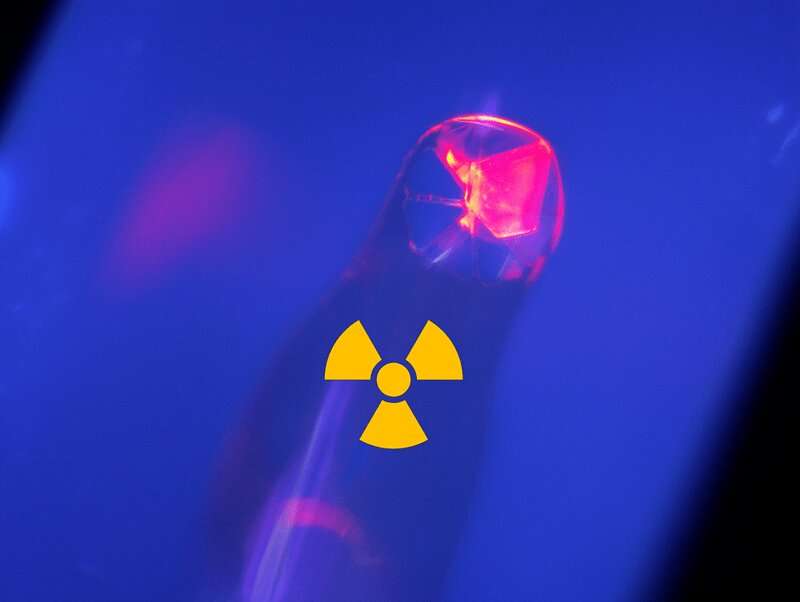New strategy can harvest chemical information on rare isotopes with a fraction of the material

Studying radioactive materials is very difficult due to the potential health risks they pose to scientists. Expense is also a major barrier, with some radioisotopes costing more than $10,000 per microgram (or $10 billion per gram). Some radioisotopes cannot be produced in sufficient quantities, making them difficult to study in detail with current techniques. Scientists have recently developed a new approach to harvest detailed chemical information on radioactive and/or enriched stable isotopes. The new approach is much more efficient, requiring 1,000 times less material than previous state-of-the-art methods. It offers this efficiency with no loss of data quality.
A paper describing this approach is published in the journal Inorganic Chemistry.
The new method leverages polyoxometalate ligands (POMs, i.e., molecular metal oxide cages), a class of molecules that has so far been largely overlooked for radiochemistry applications. The intrinsic properties of the POMs allow scientists to easily form compounds where the POMs form chemical bonds with the targeted radioisotopes, then crystallize these compounds, then study them with a wide variety of spectroscopic techniques while just using a few micrograms of material, compared to multiple milligrams or more for previous methods.
In their demonstrations, scientists from Lawrence Livermore National Laboratory and Oregon State University synthesized three new curium compounds and determined their detailed structures via single crystal X-ray diffraction (SCXRD), as well as electronic, magnetic, and vibrational properties via Raman, absorbance, fluorescence, and nuclear magnetic resonance spectroscopy. The researchers also obtained equivalent compounds with americium. For context, curium isotopes are not only radiotoxic, but also rare and costly to produce. As a result, only approximately 10 curium-ligand compounds have been isolated and characterized using SCXRD since the discovery of this element in 1944.
With the newly proposed method, scientists will be able to probe the chemical properties of rare and radioactive elements like never before. The new research is particularly important to study the chemistry of the actinides. These are the elements found at the bottom of the periodic table, such as actinium, americium, and curium. Most actinides can only be produced in minute quantities at specific facilities like the Department of Energy’s High Flux Isotope Reactor. Scientists know relatively little about these elements’ chemistry. Learning more about them may benefit fields ranging from cancer medicine to nuclear energy to the synthesis of new elements.
The new POM-based method will help expand actinide chemistry while complying with the current cost and low-availability constraints for research isotopes. Scientists could also apply this strategy to offer a new perspective on the chemistry of some of the rarest and most toxic elements on Earth, which could not be studied using previous methods.
More information:
Christopher A. Colla et al, Contrasting Trivalent Lanthanide and Actinide Complexation by Polyoxometalates via Solution-State NMR, Inorganic Chemistry (2022). DOI: 10.1021/acs.inorgchem.2c04014
Citation:
New strategy can harvest chemical information on rare isotopes with a fraction of the material (2023, June 5)
retrieved 5 June 2023
from https://phys.org/news/2023-06-strategy-harvest-chemical-rare-isotopes.html
This document is subject to copyright. Apart from any fair dealing for the purpose of private study or research, no
part may be reproduced without the written permission. The content is provided for information purposes only.
For all the latest Science News Click Here
For the latest news and updates, follow us on Google News.

